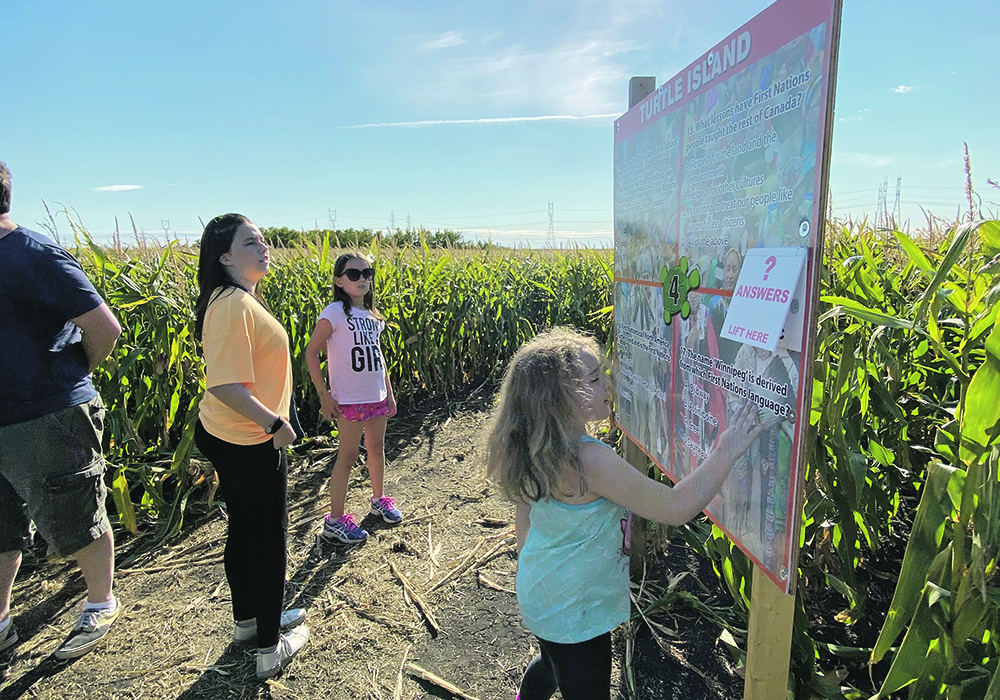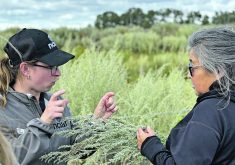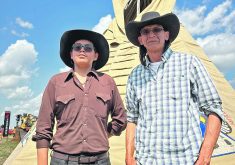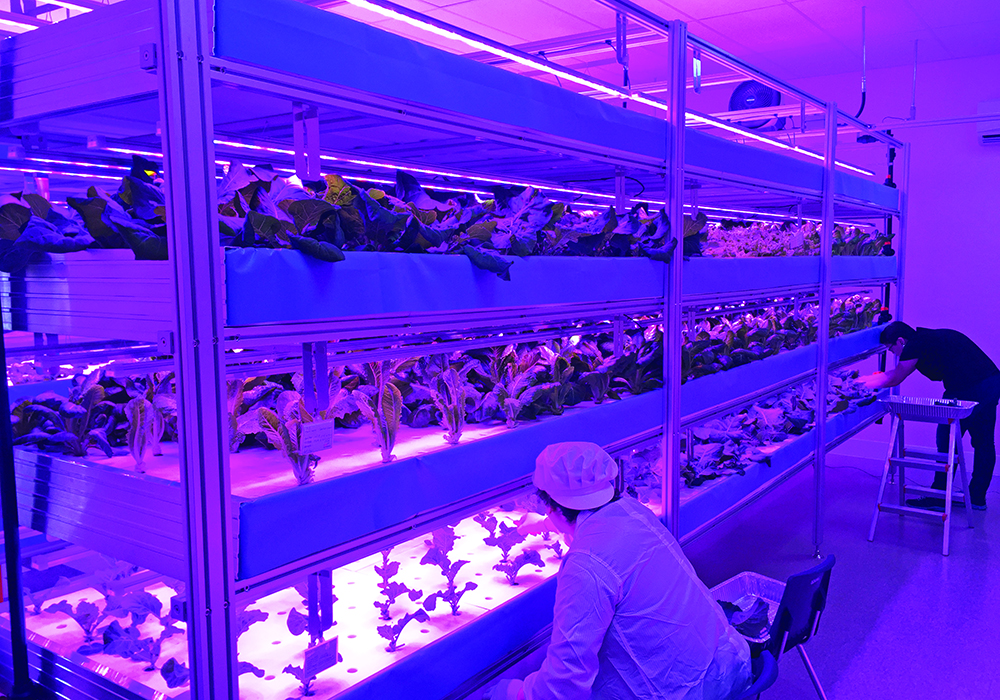Manitoba farmer works with First Nations chief to remember the children who died and suffered in the residential school system
It’s hard to describe the feeling of wandering through the Deer Meadow Farm’s Every Child Matters and Turtle Island corn mazes south of Winnipeg. To be completely candid, it was humbling to walk along the pathways of this monument for people like my grandmother, Annie (Prince) Cook, older sister to decorated war hero Sgt. Tommy Prince and a residential school survivor.
It was humbling because it felt sacred and meaningful, an offering of validation and reconciliation.
For so many years residential school survivors were forgotten and they didn’t matter—or at least that’s what they believed. Some children never made it home and many of the children who survived these schools grew up, lived complex lives rooted in trauma and died never knowing that they or the suffering they endured would ever matter or be recognized.
Other stories in our Truth and Reconciliation feature:
- Reconciling painful past may create hope
- First Nations farm focuses on health
- Indigenous farm growth bucks national trend
- Land-sharing network called a sign for a hopeful future
- Cattle deal dealt with 140 years later
Walking through the short, drought-ridden rows of corn on a warm Sunday afternoon while listening to the sound of my kids chasing one another through the rustling corn stalks, laughing and screaming in excitement, felt like a moment of validation for people like my grandmother. In all her life she didn’t get a chance to witness a reckoning or a nation coming to terms with what the Canadian government did to her and the estimated 150,000 First Nation, Inuit and Metis children who attended residential schools.
In the middle of the “Every Child Matters” corn maze— the heart— there’s a sign that reads: “This maze is to remind us that all our children matter. It is a tribute to every child that was taken from their home and separated from their family, stripped of their culture and identity, victimized by those in authority and treated like second class citizens in what is supposed to be one of the greatest countries in the world to live in and be a safe place to live in.”
In 1914, Duncan Campbell Scott, former deputy superintendent of Indian Affairs, confessed this: “Insufficient care was exercised at the admission of children to the schools. The well-known predispositions of Indians to tuberculosis resulted in a very large percentage of deaths among the pupils. They were housed in buildings not designed for school purposes, and the buildings became infected and dangerous to the inmates.
“It is quite within the mark to say that 50 percent of the children who passed through these schools did not live to benefit from the education which they had received therein.”
After the discovery of the unmarked graves of 215 children on the site of the former Kamloops Indian Residential School on the Tk’emlúps te Secwépemc First Nation last June, the nation shuddered and let out a collective gasp. Canada’s barbaric and racist legacy that is the residential school system was glaringly obvious as the remains of children were being discovered.
It was a moment that hit hard for Vince Rattai, owner and operator of Deer Meadow Farms.
“I’m a 55-year-old white man. If I’m learning, the other people are learning. If I’m thinking about this, then I’m sure other people like me are thinking about it too,” he said.
“How could this happen? It’s shocking to hear about these discoveries. These kids were taken and many of them never made it home.”

Like so many Canadians, Rattai felt a deep sense of grief and wanted to do something to honour the lost children. He got in touch with Assembly of First Nations Grand Chief Arlen Dumas, whom he’s spoken to before, and together the men created the Every Child Matters and Turtle Island corn mazes.
Dumas supplied the designs and shared knowledge with Rattai, who came up with First Nations trivia that is displayed on billboards throughout the maze.
“I learned more from Arlen in an hour than I learned from watching 10 years of news,” Rattai said.
In years past, he and his team have designed corn mazes that reflect important moments and experiences for Manitobans, but this was the first time the cornfields at Deer Meadow Farms were etched for a cause.
“I’m not a cause-driven person,” he said. “However, this year I knew we needed to do something on Every Child Matters. I felt pressed to do that. I felt like I’ve never done human rights before and we should.”
Corn holds significant meaning for Indigenous people. Farming and agriculture were a way of life. The plant historically had a practical meaning and was used to feed and nourish, but it also had a spiritual meaning and teaching.
The Ojibway word for corn is Mandaamin. Though there are different variations, the legend of Mandaamin is that he was a spirit man— the spirit of corn —who sacrificed himself for the Ojibway people.
Mandaamin was a gift from the creator so that the Ojibway people did not have to depend on the hunt and the waters alone for food.
I didn’t grow up learning about my culture or any of the teachings of our people. I didn’t practice our traditions or even know where I came from. My grandmother, Annie, died when I was a baby. I have a handful of old photographs of her as an old woman, cradling me as a baby, but that’s it.
Our lives touched briefly before hers ended, and yet I have this profound sense of love and loss for her.
But I am learning now, and I am sharing her name and her story— what I know of it— because it’s important and she mattered.
Shelley Cook is a columnist and the manager of the Reader Bridge at the Winnipeg Free Press. She is a member of the Brokenhead Ojibway Nation and lives on Treaty 1 (Winnipeg.) Cook can be contacted at @ShelleyACook and Shelley.cook@freepress.mb.ca.















